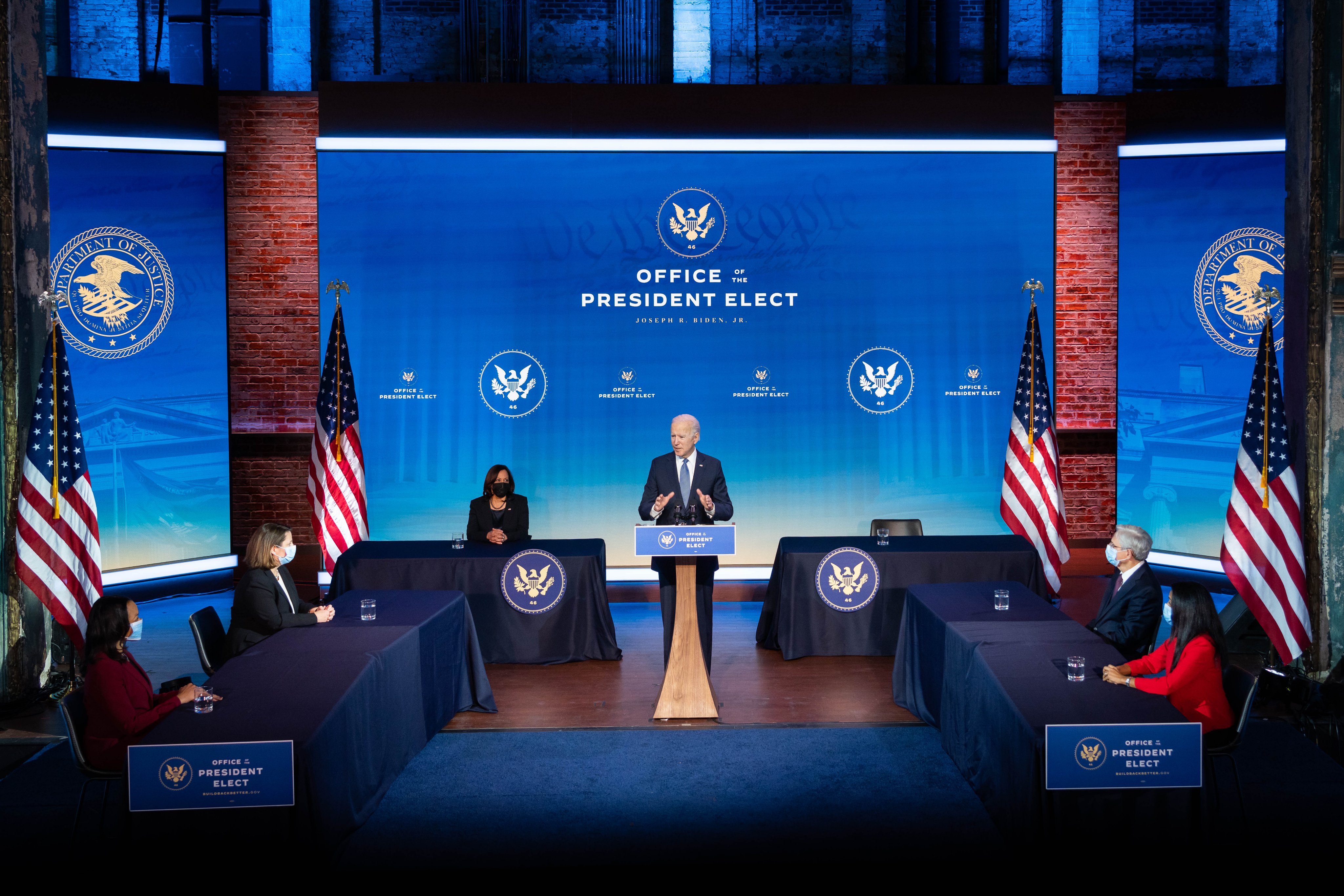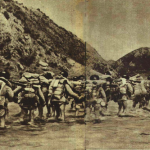IDR Blog
Joe Biden’s B3W Initiative

Pic Source: https://twitter.com/JoeBiden/status/1347571667598503937/photo/1
On June 12, 2021, US President Joe Biden’s administration said that the ‘Build Back Better World’ (B3W) Initiative will be announced on June 13 at the G7 Summit; B3W being an infrastructure financing mechanism for low and middle-income countries to rival China’s Belt and Road Initiative (BRI). Officials said B3W will be values driven and sustainable aimed at mobilizing the private sector to invest and fulfill tens of trillions of dollars of infrastructure financing needs in the developing world, while meeting labor, environmental and transparency standards, adding. “We believe we will beat the BRI by offering a higher-quality choice and we’ll offer that choice with self-confidence about our model that reflects our shared values.” White House also announced that the G-7 and guest countries will provide more than one billion additional COVID-19 vaccine doses for the world, of which the US will contribute $500 million worth.
At the G7 Summit, Biden said he wants the US-backed B3W plan to be a higher-quality alternative to a similar Chinese program. A White House statement said President Biden and G7 partners agreed to launch the B3W initiative to help narrow the over $40 trillion infrastructure need in the developing world, exacerbated by the COVID-19 pandemic.
Quantum of funds for B3W infrastructure projects in developing countries and where these are planned to used is not known. As lead partner in the B3W, the US will mobilize indigenous finance development avenues like the Development Finance Corporation, USAID, MillenniumChallenge Corporation, US Trade and Development Agency and Transaction Advisory Fund to complement domestic infrastructure investments in the American Job Plan creating new opportunities at home and abroad.
China’s BRI, is a multi-trillion-dollar infrastructure scheme launched in 2013, involving development and investment initiatives. Of the 140 countries that have signed Memorandum of Understanding (MoU) with China under the BRI, 40 are in Sub-Saharan Africa, 34 in Europe and Central Asia including 18 in the European Union and 24 countries in East Asia and Pacific. According to one report, Beijing has so far committed to funding of $4.2 trillion in BRI projects including projects involving Chinese participation. In South Asia, China has funded BRI projects in Pakistan, Bangladesh, Nepal, Afghanistan, Sri Lanka, and the Maldives. In Myanmar, it is developing the China-Myanmar-Economic Corridor (CMEC) and plans extension of the China-Pakistan-Economic Corridor (CPEC) into Afghanistan, Central Asia and Eurasia.
The B3W has generated general consensus amongst the US and NATO. But its execution is not going to be easy considering the influence China enjoys. B3W is supposed to benefit ‘developing nations’ but why have European countries joined BRI? According Chinese media quoting the EU Chamber of Commerce in China, nearly 60 percent of European companies plan to expand their businesses in China this year. Half the surveyed companies said their profit margins in China are higher than the global average, which is much higher than the 38 percent in last year’s survey. 585 European companies are registered with EU Chamber of Commerce in China.
China has become an important source of European economic growth and profit and European companies have increased their investment in the country with China having contained the pandemic. China-EU trade reached $250.3 billion in the first four months of 2021, up 42 percent year-on-year. In the same period, the EU investment in China in same period was $1.95 billion (12.4 percent increase) and China’s direct investment in EU reached $1.69 billion, up 70.8percent. Will European countries dump the BRI and opt for B3W?
One may say that if the developing world requires $40 trillion plus of infrastructure and China has so far signed only $4.2 trillion under BRI projects; there is more than ample scope for the B3W Initiative. But where can B3W be applied to offset China’s strategic leverages and expansionist designs? For example, China is the largest trading partner of ASEN and countries like Laos and Cambodia owe money to China and most importantly companies of ASEAN in China provide job opportunities and businesses.
In South Asia, Pakistan and Sri Lanka are already debt-trapped by China. As per one report, Pakistan, Sri Lanka, Bangladesh, Maldives and Nepal cumulatively owe China over $28 billion; $16 billion by Pakistan, $6 billion by Sri Lanka, $4.7 billion Bangladesh, $1.4 billion by Maldives and $331.96 million by Nepal. Despite the year plus India-China standoff, China continues to be India’s largest trading partner although the tradedeficit with China fell to $45.91 billion from $56.95 billion in 2019.
China shows no respect to the environment while executing BRI; which is where B3W Initiative can score high on this count. But then it appears very doubtful that countries like Afghanistan, Pakistan, Sri Lanka, Myanmar, Nepal, Iraq or say Central Asia as a whole given the China-Russia influence in the region would opt for B3W. Iran anyway is out of the questions and many Arab and African countries may prefer Chinese investments over the western B3W considering how China makes countries agree to BRI.
With US leading the B3W Initiative, adequate funds would likely be available for infrastructure projects in developing countries. But who will execute them? With Biden having signed the American Jobs Plan into law and the American Rescue Plan to follow suit, logically American companies would execute projects at home. For that matter in 20 years occupation, American companies could have benefited from extracting $1-3 trillion minerals–oil reserves in Afghanistan that would have improved Afghan economy too. But getting back to B3W, Chinese companies are ever ready to execute BRI projects. How would B3W match this?
America being the largest economy in the world, it places sanctions on countries where it deems fit. Besides, the US and NATO have been using their military muscle around the world, undertaking operations for various reasons. But the biggest challenge for US-G7 will be how to make low and middle income countries sign MoUs for the B3W projects.
China does not flex military muscle for getting BRI projects albeit it does use military cooperation, supply of weaponry and even provides nuclear knowhow – as in case of Pakistan. China being the second largest economy in the world uses trade and direct investments as enablers to facilitate BRI. But beyond this, China ensures senior-level visits to influence relations, ‘buys’ specific political-military leaders and diplomats, corporate, groups, organizations, scholars and media in the target country to manipulate perceptions. In sum, China uses multiple mechanisms including political, diplomatic, economic and psychological – all hedging actions so it doesn’t look bullish.
Witness the ‘charm offensive’ China launched before Chinese President Xi Jinping visited Italy in March 2019 for Italy signing the MoU with China to join the BRI – first G7 country to do so. Recently on May 31, 2021, Jinping told Communist Party officials, “It is necessary to make friends, unite and win over the majority, and constantly expand the circle of friends (when it comes to) international public opinion.” He also said it was important to present an image of a credible, loveable and respectable China and that the party’s ‘propaganda’ organizations must make it clear (read fool the world and Chinese public) that Beijing wanted nothing but the Chinese people’s happiness and good fortune.
The strategic competition between the US and China is out in the open. But the US, G7 and associated countries with the B3W Initiative would do well to study how China has enabled the BRI in 140 countries. The aim of higher-quality, clean and sustainable projects in low and middle income countries through B3W is good but mechanisms, tools and an influence strategy matching with or better than China will need to be developed for the B3W to achieve its strategic aim given the head start China has.




